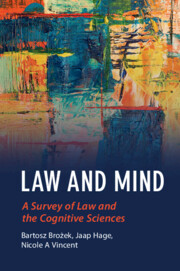III - Legal Doctrine and Cognitive Sciences
Published online by Cambridge University Press: 21 April 2021
Summary

- Type
- Chapter
- Information
- Law and MindA Survey of Law and the Cognitive Sciences, pp. 215 - 350Publisher: Cambridge University PressPrint publication year: 2021



